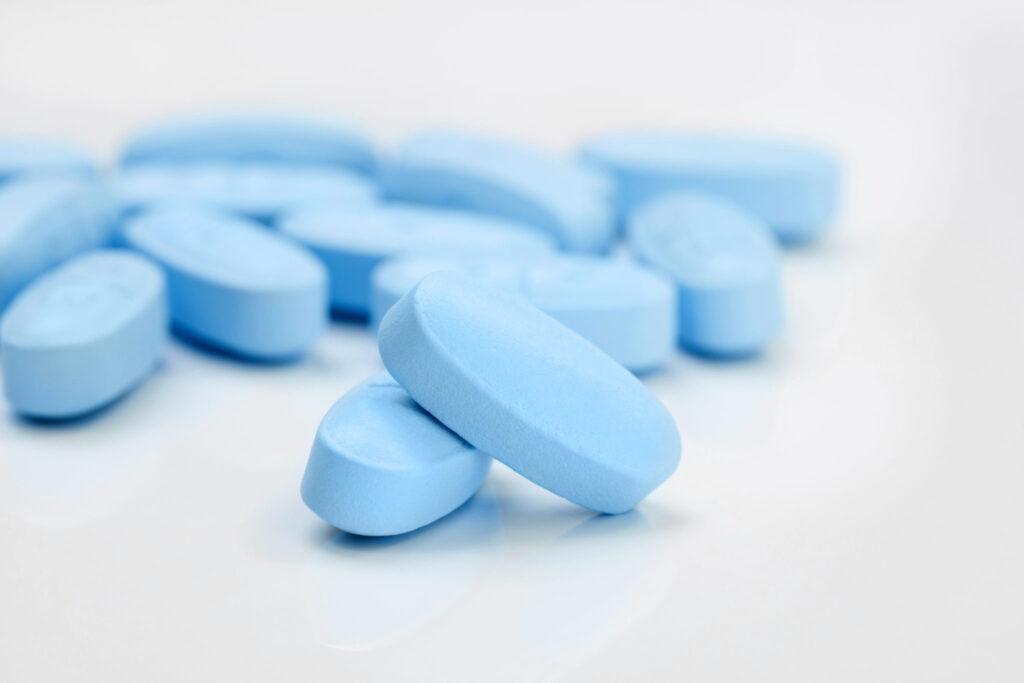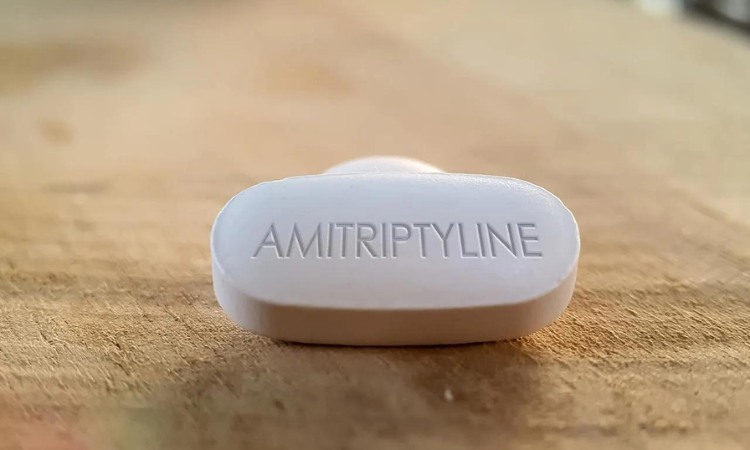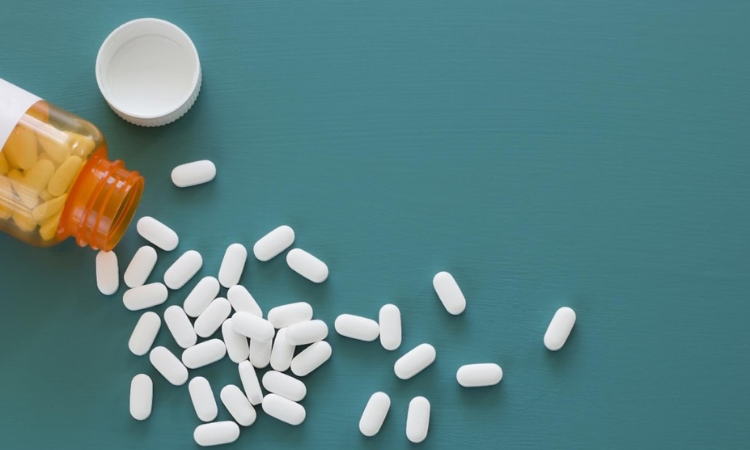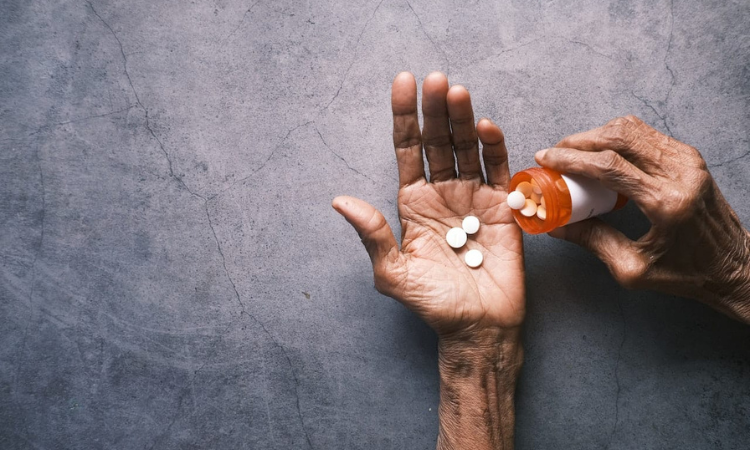Living with a dual diagnosis, meaning you have both a mental health disorder and a substance use disorder, can feel like navigating a tangled forest. You encounter the shadows of addiction clinging to the branches of anxiety, depression, or other mental health challenges. But in the midst of this complexity lies hope, and the guiding light comes in the form of dual diagnosis treatment.
But with so many paths and approaches, it’s natural to wonder: what is the most common dual diagnosis treatment? There isn’t a single, silver-bullet answer.
Today, let’s uncover the secrets of dual diagnosis treatment, understand how it works and the role of a dual diagnosis treatment facility in creating a journey towards lasting wellness. Together, we’ll uncover the nuanced pathways that pave the way toward enduring wellness in the realm of co-occurring mental health and substance use disorders.
Understanding Mental Health and Substance Use Disorders
Living in a world where mental health and substance use intertwine, it’s crucial to unravel the complexities of these interconnected challenges. Mental health disorders and substance use disorders are threads in the intricate tapestry of human experience, weaving together elements of emotion, behavior, and well-being. Here’s an overview to help you learn and explore:
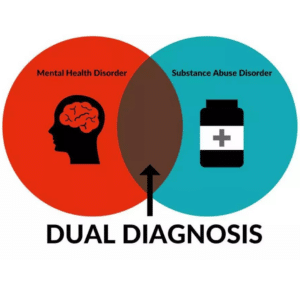
Mental Health Disorders:
- Definition: Mental health disorders are conditions that affect our thoughts, feelings, and behaviors, impacting our everyday functioning.
- Examples: Anxiety, depression, trauma, bipolar disorder, schizophrenia, eating disorders, etc.
- Causes: Can be complex and often involve a combination of factors like genetics, brain chemistry, life experiences, and trauma.
- Symptoms: Vary depending on the specific disorder but can include changes in mood, thoughts, behavior, sleep, and appetite.
- Treatments: Effective treatments are available, including therapy, medication, and lifestyle changes.
Substance Use Disorders:
- Definition: Substance use disorders are characterized by compulsive drug or alcohol use despite harmful consequences.
- Examples: Alcohol dependence, drug addiction, gambling addiction, etc.
- Causes: Complex interplay of factors like genetics, brain chemistry, mental health conditions, social environment, and early exposure to substances.
- Symptoms: Cravings, tolerance (needing increasingly higher amounts), withdrawal symptoms, neglecting responsibilities, and impaired relationships.
- Treatments: Focus on abstinence, relapse prevention, and managing underlying conditions. This can involve therapy, medication, support groups, and addiction recovery programs.
The Interplay:
What makes the landscape more intricate is the interplay between mental health and substance use. Often, individuals with mental health disorders may turn to substances as a way to cope with their symptoms, leading to a dual diagnosis. Alternatively, substance use can contribute to or exacerbate mental health challenges, creating a complex web of co-occurring conditions.
The Need for Dual Diagnosis Treatment:
Understanding this interwoven dynamic is essential for effective treatment. Dual diagnosis treatment recognizes the symbiotic relationship between mental health and substance use disorders. It involves integrated approaches that address both components simultaneously, acknowledging that successful recovery requires untangling the threads of both challenges.
Key Components of Dual Diagnosis Treatment:
- Integrated Therapies: Approaches that seamlessly blend mental health and substance use interventions for a comprehensive understanding and treatment.
- Medication Management: Targeted medications addressing both mental health symptoms and substance use issues.
- Therapy: Individual and group therapy provides a platform for exploration, sharing, and developing coping strategies.
- Psychoeducation: Equipping individuals with knowledge about the complex relationship between mental health and substance use, fostering awareness.
- Support Groups: Building a sense of community and shared understanding among individuals facing similar challenges.
- Relapse Prevention Strategies: Developing tools and strategies to prevent relapse, including coping skills and personalized prevention plans.
Finding the Right Dual Diagnosis Rehab: Your Blueprint to Balanced Recovery
Beginning the journey to recovery from both mental health and substance use challenges is a transformative experience. Choosing the right dual diagnosis rehab is like selecting a trusted guide for this expedition – a guide that understands the intricate dance between mental health and addiction, offering a personalized roadmap for your unique recovery.
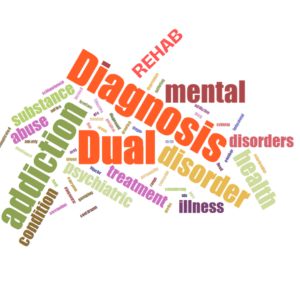
Dual diagnosis rehab centers specialize in addressing the nuanced relationship between mental health and substance use disorders. These facilities acknowledge that untangling these threads requires a tailored and integrated approach to healing.
Key Considerations in Finding the Right Dual Diagnosis Rehab:
1. Accreditation and Licensing:
- Ensure the rehab facility is accredited by reputable organizations, ensuring adherence to quality standards and ethical practices.
2. Qualified and Specialized Staff:
- Look for a facility with a multidisciplinary team of professionals trained in both mental health and addiction treatment.
3. Integrated Treatment Approaches:
- Choose a rehab that employs integrated therapies, addressing both mental health and substance use for a holistic recovery.
4. Customized Treatment Plans:
- Seek a facility that tailors treatment plans to individual needs, recognizing the unique challenges of each person’s dual diagnosis.
5. Evidence-Based Practices:
- Opt for a rehab center that utilizes evidence-based practices, ensuring that treatments are backed by scientific research and proven effectiveness.
6. Family Involvement and Support:
- Consider a rehab that involves and supports the family in the recovery process, recognizing the importance of a supportive environment.
7. Aftercare and Relapse Prevention:
- Look for a facility that provides comprehensive aftercare plans and relapse prevention strategies, ensuring ongoing support post-treatment.
Navigating Dual Diagnosis Treatment: What to Anticipate
Dual diagnosis treatment is a specialized form of care designed for individuals who are dealing with both a substance use disorder and a mental health disorder simultaneously. This approach recognizes the complex interplay between addiction and mental health issues and aims to address both aspects concurrently. Here are some key elements to expect from dual diagnosis treatment:
1. Comprehensive Assessment:
- A thorough evaluation is conducted to assess the extent and nature of both the substance use disorder and the mental health condition. This helps in developing an individualized treatment plan.
2. Integrated Treatment:
- Rather than treating the addiction and mental health disorders separately, dual diagnosis treatment integrates interventions to address both aspects simultaneously. This can involve a combination of therapy, counseling, medication management, and other therapeutic modalities.
3. Medical and Psychiatric Support:
- Medical professionals and psychiatrists may be involved in the treatment process to address the physical and mental health aspects. Medications may be prescribed to manage symptoms of mental health disorders, and withdrawal symptoms from substance use may be monitored and treated.
4. Therapeutic Modalities:
- Psychotherapy and counseling are central components of dual diagnosis treatment. Cognitive-behavioral therapy (CBT), dialectical behavior therapy (DBT), and other evidence-based therapeutic approaches may be used to address both addiction and mental health issues.
5. Support Groups:
- Participation in support groups, such as 12-step programs or other peer support groups, can be beneficial. These communities foster a feeling of camaraderie and mutual understanding among individuals encountering comparable challenges.
6. Education and Skill Building:
- Clients are often educated about the connection between substance use and mental health, helping them understand the impact of each on the other. Additionally, skill-building sessions may focus on coping mechanisms, stress management, and relapse prevention.
7. Family Involvement:
- In some cases, family therapy or education may be incorporated into the treatment plan. Involving family members can help create a supportive environment and address familial dynamics that may contribute to the dual diagnosis.
8. Aftercare Planning:
- Dual diagnosis treatment typically includes a thorough aftercare plan to support individuals as they transition back into their regular lives. This may involve ongoing therapy, support groups, and other resources to prevent relapse and promote long-term recovery.
It’s important to note that the specific components of dual diagnosis treatment can vary depending on the individual’s unique needs and the treatment facility’s approach. A multidisciplinary team of professionals, including psychiatrists, psychologists, counselors, and medical staff, often collaborate to provide comprehensive care.
Exploring the Path to Recovery from Substance Use Disorder
Substance use disorder is a complex condition characterized by the compulsive use of substances despite adverse consequences. It affects both the brain and behavior, often leading to long-lasting changes that challenge an individual’s self-control and decision-making abilities. Acknowledging the problem is the first crucial step toward recovery.
The Recovery Journey:
1. Acknowledgment and Acceptance:
- Acknowledging the presence of a substance use disorder and accepting the need for change is foundational to the recovery process. This self-awareness creates a platform for positive transformation.
2. Seeking Professional Help:
- Professional guidance is instrumental in addressing the physical and psychological aspects of addiction. Rehabilitation centers, therapists, and medical professionals play key roles in developing personalized treatment plans.
3. Detoxification:
- Detoxification is often the initial phase of recovery, involving the removal of substances from the body. Medical supervision is crucial during this stage to manage withdrawal symptoms and ensure a safe transition.
4. Therapeutic Interventions:
- Various therapeutic modalities, such as cognitive-behavioral therapy (CBT) and group therapy, aid in addressing the root causes of addiction, developing coping mechanisms, and fostering resilience.
5. Supportive Networks:
- Establishing a strong support system is vital. Family, friends, and support groups provide encouragement, understanding, and accountability throughout the recovery journey.
6. Lifestyle Changes:
- Adopting a healthy lifestyle contributes significantly to recovery. This includes regular exercise, proper nutrition, and engaging in activities that promote mental well-being.
7. Relapse Prevention:
- Learning to recognize triggers and developing effective coping strategies are crucial for preventing relapse. Relapse prevention plans are often created with the guidance of therapists or counselors.
8. Continued Growth and Maintenance:
- Recovery is an ongoing process of personal growth. Continued participation in support groups, therapy, and a commitment to a substance-free lifestyle contribute to long-term success.
Recovering from a substance use disorder is a multifaceted journey that demands dedication and perseverance. By embracing professional guidance, building a robust support system, and committing to personal growth, individuals can embark on a path towards a healthier, substance-free life.
Financing Your Journey to Recovery: Paying for Dual Diagnosis Treatment Centers
Paying for dual diagnosis treatment centers can be a complex and daunting task, but fortunately, there are options available to make it more manageable. Here’s a breakdown of different ways to cover the cost:
Using Insurance:
- Health insurance: Most health insurance plans in the US are required to cover mental health and substance abuse treatment, including dual diagnosis, thanks to the Mental Health Parity and Addiction Equity Act. Check your specific plan details to understand your coverage for inpatient and outpatient care, co-pays, deductibles, and in-network/out-of-network providers.
- Specialty plans: Some individuals may have access to specialized insurance plans, like Employee Assistance Programs (EAPs) or managed care plans, that offer comprehensive coverage for dual diagnosis treatment.
Without Insurance:
- Private pay: If you have the financial means, you can pay for treatment directly to the center. Many centers offer flexible payment plans and financing options to make it more affordable.
- Sliding scale fees: Many treatment centers, especially non-profit ones, offer sliding scale fees based on your income. This means the cost of treatment is adjusted to be more affordable for those with lower incomes.
- Scholarships and grants: Several organizations offer scholarships and grants specifically for individuals seeking dual diagnosis treatment. Researching and applying for these options can help offset the cost.
- Fundraising: Consider hosting fundraising events or starting a crowdfunding campaign to raise money for treatment.
Other Resources:
- Government assistance: State and federal government programs may offer financial assistance for mental health and substance abuse treatment. Contact your local social services agency or department of health for information.
- Charity care: Some treatment centers offer charity care to individuals who cannot afford treatment. They may waive or significantly reduce costs based on financial hardship.
Here are some additional tips for navigating the payment process:
- Contact the treatment center directly: Discuss your financial situation with the admissions team. They can explain their payment options and help you find the most affordable solution.
- Shop around: Compare costs and treatment options at different centers before making a decision.
- Be prepared to advocate: Don’t be afraid to negotiate with insurance companies or treatment centers to get the best possible deal.
- Seek additional support: There are many organizations and resources available to help you through the recovery process.
Remember, seeking help for dual diagnosis is a valuable investment in your health and well-being. Don’t let financial concerns prevent you from getting the treatment you need.
The Bottom Line
In summary, the integration of dual diagnosis treatment within a dedicated facility plays a crucial role in promoting overall wellness by concurrently addressing both mental health and substance use concerns. The combination of personalized assessments, integrated interventions, and ongoing support creates a comprehensive approach to healing, unique to the specialized environment of a dual diagnosis treatment facility.
By recognizing the interconnected nature of these challenges, individuals within a dual diagnosis treatment facility are provided with a tailored roadmap for their recovery journey. The involvement of medical professionals, therapeutic modalities, and supportive networks within this specialized setting contributes to a holistic and effective treatment experience.
As we reflect on the significance of dual diagnosis treatment within a dedicated facility, we invite you to share your thoughts. How do you perceive the impact of addressing both mental health and substance use concerns together in such specialized environments? Your insights contribute to the ongoing conversation about fostering wellness in those facing these challenges.

